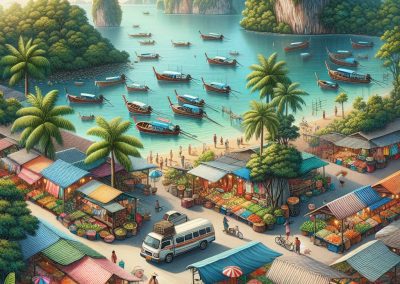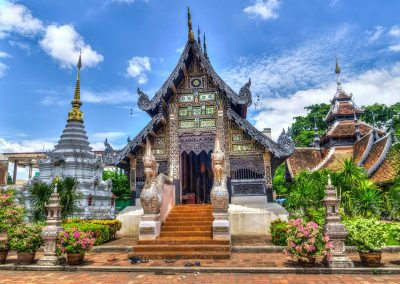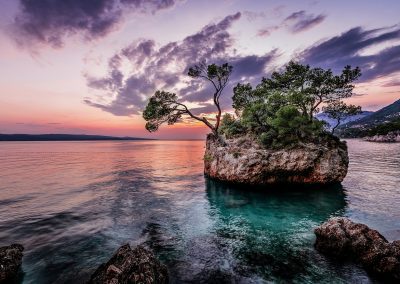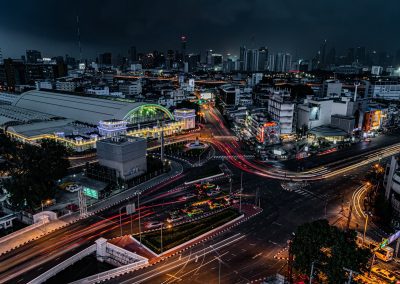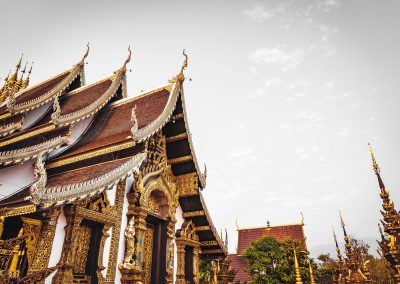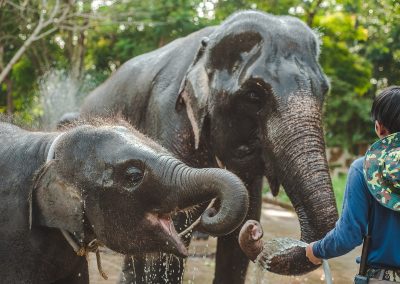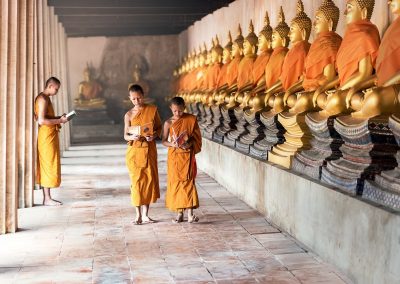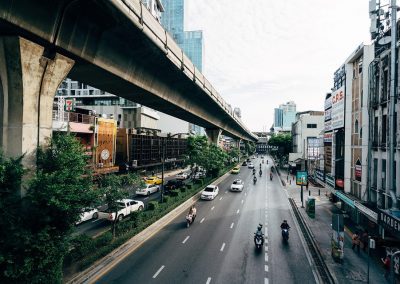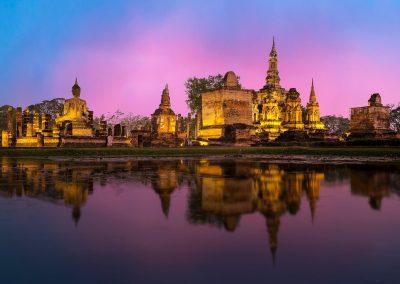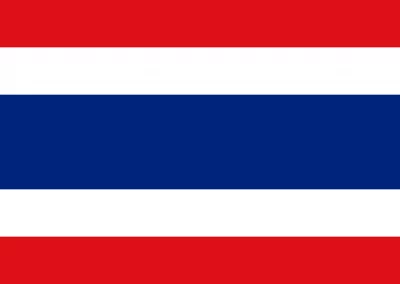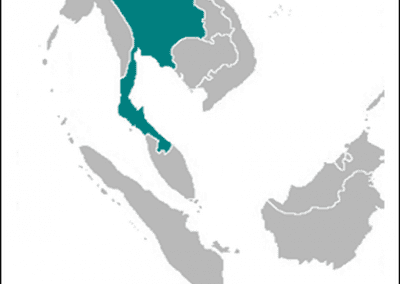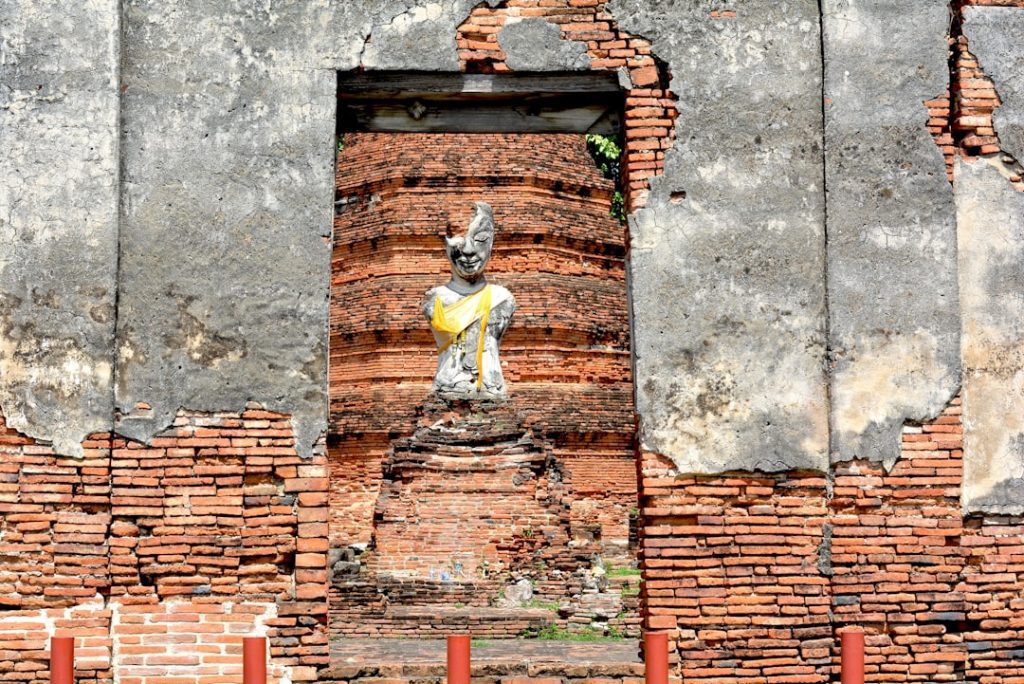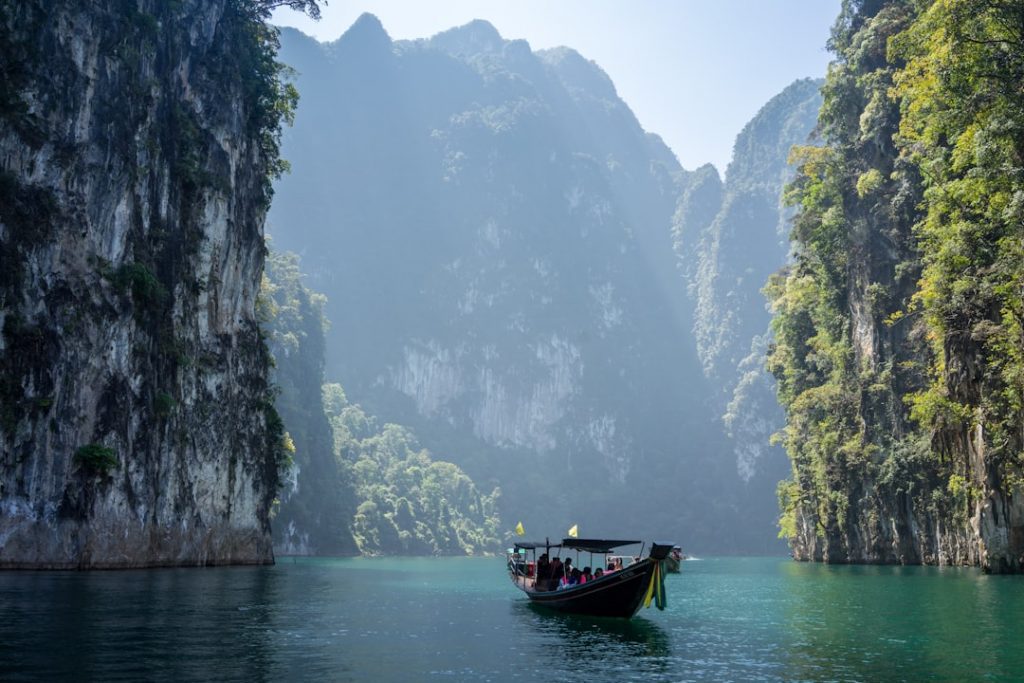Thailand
(Ratcha Anachak Thai (Kingdom of Thailand))
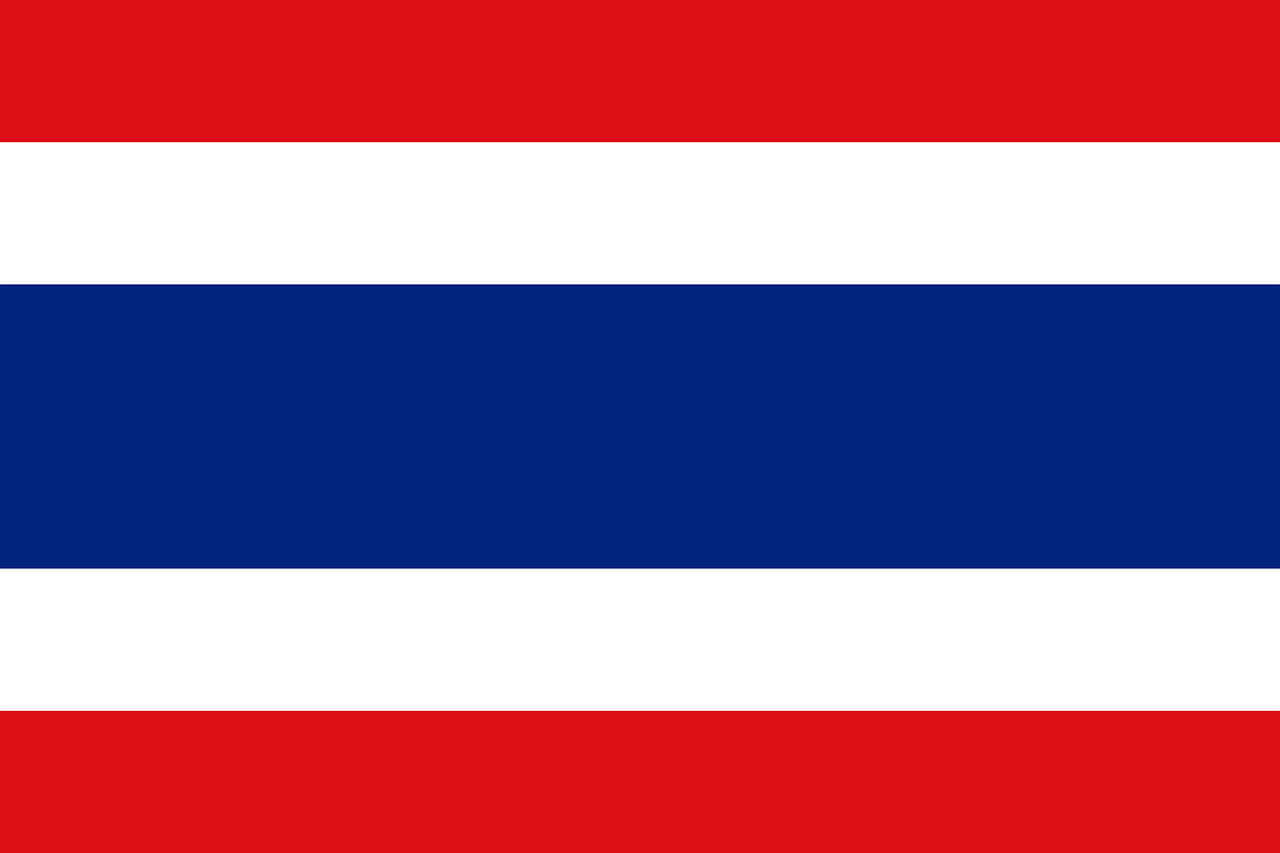
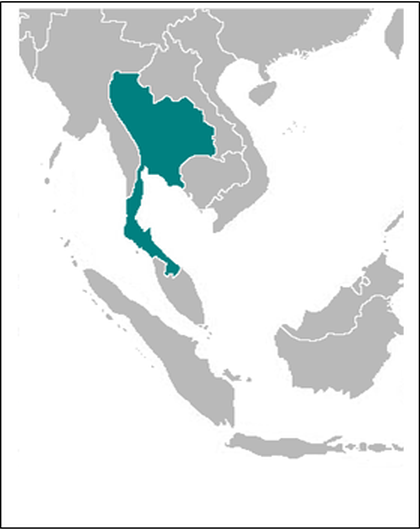

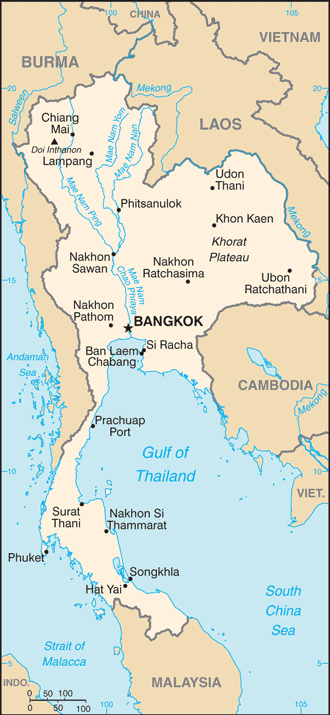
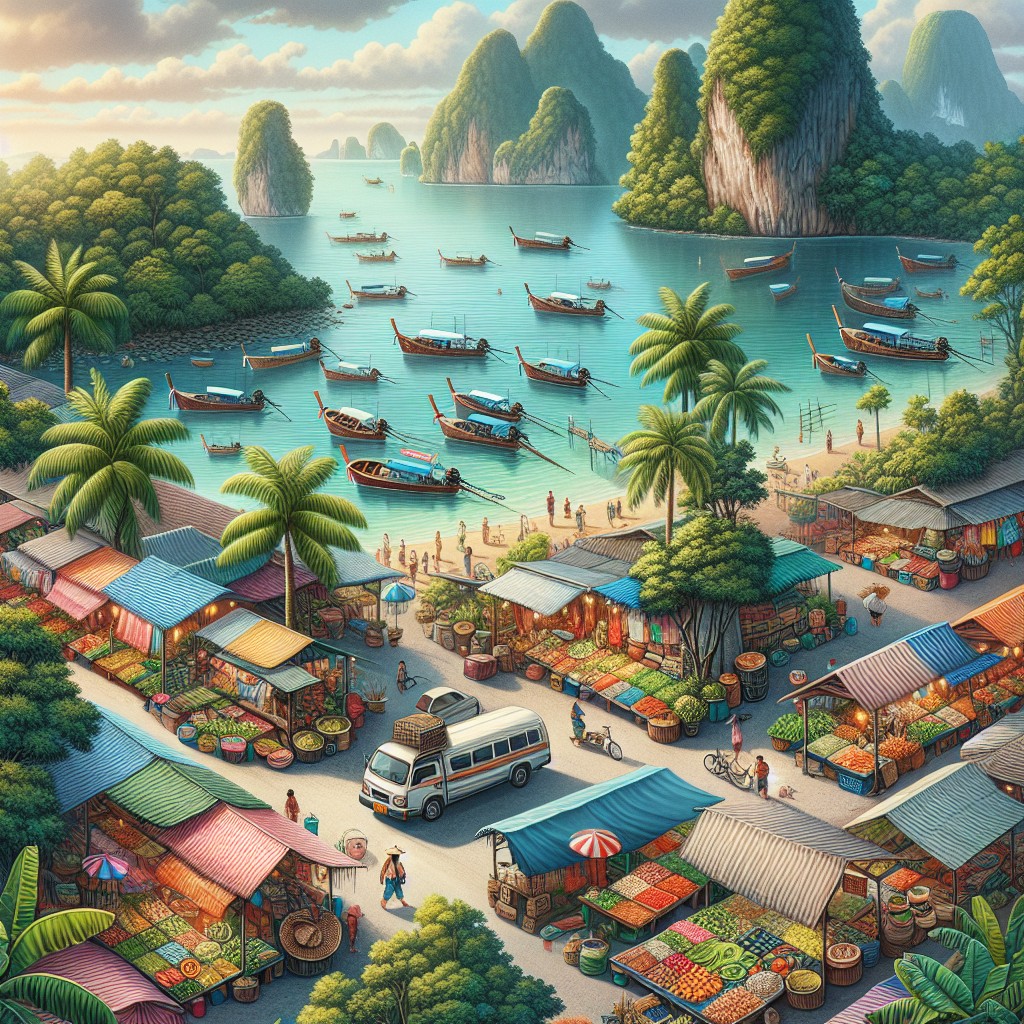
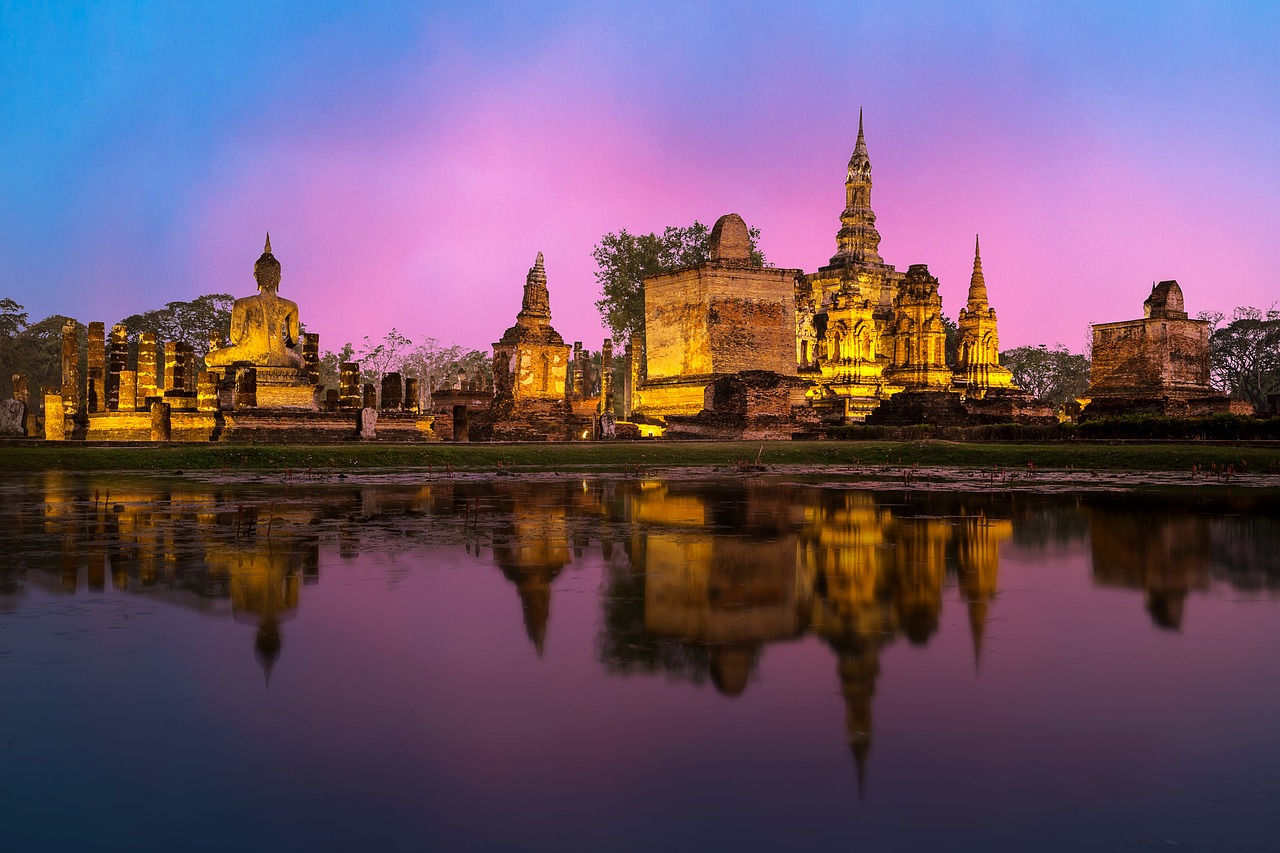
Capital: Bangkok
Population (Estimated July 2012): 67,091,089
Area: 513,120km2 or 198,117mi2
Currency: Baht (THB)
Official Language: Thai
Political Information: Constitutional Monarchy and Parliamentary Democracy
Official Religion: No Official Religion
(approximately 94.6% of the population is Buddhist, 4.6% are Muslim, 0.7% are Christian and 0.1% have other religious beliefs)
Highest Mountain: Doi Inthanon Mountain at 2,580m or 8,464ft
GDP Official Exchange Rate (OER is more precise at gauging a country’s economic power)
(Estimated 2011): $345.6 billion (US$) or (GBP)
GDP (OER) Per Capita (per member of the population estimated 2011): (US$) or (GBP)
GDP Purchasing Power Parity (PPP is good for gauging living conditions and the use of resources but is not as accurate as OER. This data has been calculated based on the sum value of all goods and services produced in the country valued at prices prevailing in the United States)
(Estimated 2011): $601.4 billion (US$) or (GBP)
GDP (PPP) Per Capita (per member of the population estimated 2011): $9,700 (US$) or (GBP)
Time Zone (GMT/UTC): +7:00
Wildlife:
Counties/Provinces/States: 77 provinces (changwat, singular and plural); Amnat Charoen, Ang Thong, Bueng Kan, Buriram, Chachoengsao, Chai Nat, Chaiyaphum, Chanthaburi, Chiang Mai, Chiang Rai, Chon Buri, Chumphon, Kalasin, Kamphaeng Phet, Kanchanaburi, Khon Kaen, Krabi, Krung Thep Mahanakhon (Bangkok), Lampang, Lamphun, Loei, Lop Buri, Mae Hong Son, Maha Sarakham, Mukdahan, Nakhon Nayok, Nakhon Pathom, Nakhon Phanom, Nakhon Ratchasima, Nakhon Sawan, Nakhon Si Thammarat, Nan, Narathiwat, Nong Bua Lamphu, Nong Khai, Nonthaburi, Pathum Thani, Pattani, Phangnga, Phatthalung, Phayao, Phetchabun, Phetchaburi, Phichit, Phitsanulok, Phra Nakhon Si Ayutthaya, Phrae, Phuket, Prachin Buri, Prachuap Khiri Khan, Ranong, Ratchaburi, Rayong, Roi Et, Sa Kaeo, Sakon Nakhon, Samut Prakan, Samut Sakhon, Samut Songkhram, Sara Buri, Satun, Sing Buri, Sisaket, Songkhla, Sukhothai, Suphan Buri, Surat Thani, Surin, Tak, Trang, Trat, Ubon Ratchathani, Udon Thani, Uthai Thani, Uttaradit, Yala, Yasothon
Leaders: King Bhumibol Adulyadej; Prime Minister Yingluck Shinawatra
Sources: CIA World Fact Book, Encyclopaedia Britannica.
Thailand
Thailand, often referred to as the “Land of Smiles,” boasts a rich tapestry of culture and history that has evolved over centuries. The Kingdom of Thailand, formerly known as Siam, has a history that dates back to prehistoric times, with archaeological evidence suggesting human habitation as far back as 40,000 years ago. The region has been influenced by various civilisations, including the Khmer Empire and the Mon people, which have left indelible marks on its cultural landscape.
The establishment of the Sukhothai Kingdom in the 13th century marked a significant turning point, as it is often regarded as the cradle of Thai civilisation. This period saw the development of the Thai script and the emergence of Theravada Buddhism as a dominant force in shaping the nation’s identity. The Ayutthaya Kingdom, which followed Sukhothai, further solidified Thailand’s cultural foundations.
It became a major trading hub in Southeast Asia, attracting merchants from around the world. The architectural splendour of Ayutthaya, with its grand temples and palaces, reflects the kingdom’s prosperity and cultural sophistication. However, the kingdom faced challenges, including invasions from Burma, leading to its eventual decline in the 18th century.
The rise of the Rattanakosin Kingdom, with Bangkok as its capital, ushered in a new era characterised by modernisation and Western influence. The reign of King Rama V (Chulalongkorn) in the late 19th century was particularly transformative, as he implemented significant reforms that modernised the country while preserving its unique cultural heritage.
Summary
- Thailand’s culture and history are deeply influenced by its rich heritage and diverse ethnic groups, making it a fascinating destination for travellers.
- Top tourist attractions in Thailand include the bustling city of Bangkok, the ancient city of Ayutthaya, and the stunning beaches of Phuket and Krabi.
- Thai cuisine and street food are renowned for their bold flavours and use of fresh ingredients, offering a unique culinary experience for visitors.
- Traditional Thai festivals and celebrations, such as Songkran and Loy Krathong, showcase the country’s vibrant culture and strong sense of community.
- Thailand’s natural beauty can be explored through its lush jungles, pristine islands, and breathtaking national parks, providing endless opportunities for outdoor adventures.
Top Tourist Attractions in Thailand
Thailand is renowned for its diverse array of tourist attractions that cater to a wide range of interests. One of the most iconic sites is the Grand Palace in Bangkok, a stunning complex that served as the official residence of the Kings of Siam. The intricate architecture and ornate decorations of Wat Phra Kaew, which houses the Emerald Buddha, are a testament to Thailand’s artistic prowess and religious devotion.
Visitors are often captivated by the vibrant colours and intricate details that adorn the buildings, making it a must-visit destination for anyone exploring the capital. Another remarkable attraction is the ancient city of Ayutthaya, a UNESCO World Heritage Site that offers a glimpse into Thailand’s historical grandeur. The ruins of temples such as Wat Mahathat and Wat Phra Si Sanphet evoke a sense of nostalgia for a bygone era.
Tourists can explore these archaeological treasures by bicycle or boat, immersing themselves in the serene atmosphere that surrounds this once-thriving metropolis. Additionally, Chiang Mai, located in northern Thailand, is famous for its well-preserved temples and vibrant night markets. The annual Yi Peng Lantern Festival draws thousands of visitors who release lanterns into the night sky, creating a breathtaking spectacle that embodies Thai spirituality and community.
Thai Cuisine and Street Food
Thai cuisine is celebrated worldwide for its bold flavours and aromatic ingredients, making it an integral part of Thailand’s cultural identity. The harmonious balance of sweet, sour, salty, and spicy flavours is exemplified in dishes such as Pad Thai and Tom Yum Goong. Street food stalls can be found on nearly every corner in cities like Bangkok, offering an array of delectable options that reflect regional variations.
For instance, in the north, Khao Soi—a coconut curry noodle soup—has become a beloved dish among locals and tourists alike. The street food scene in Thailand is not merely about sustenance; it is an experience that engages all the senses. Vendors skillfully prepare dishes right before your eyes, filling the air with enticing aromas.
A visit to Yaowarat Road in Bangkok’s Chinatown is a culinary adventure where one can sample everything from crispy spring rolls to mango sticky rice. The vibrant atmosphere and bustling crowds create an electric energy that enhances the enjoyment of these culinary delights. Moreover, food festivals throughout the country celebrate local ingredients and traditional cooking methods, allowing visitors to delve deeper into Thailand’s gastronomic heritage.
| Cuisine Type | Popular Dishes | Ingredients |
|---|---|---|
| Street Food | Pad Thai, Som Tum (Papaya Salad), Satay | Rice noodles, peanuts, tamarind, papaya, chillies, peanuts, chicken, beef, or pork |
| Curries | Green Curry, Massaman Curry, Panang Curry | Coconut milk, curry paste, kaffir lime leaves, lemongrass, galangal, fish sauce |
| Seafood | Tom Yum Goong (Spicy Shrimp Soup), Pla Rad Prik (Fried Fish with Chilli Sauce) | Shrimp, fish, squid, chillies, lime, lemongrass, garlic |
| Desserts | Mango Sticky Rice, Coconut Ice Cream, Khanom Krok (Coconut Pancakes) | Mango, sticky rice, coconut milk, sugar, coconut, rice flour |
Thai cuisine is celebrated worldwide for its bold flavours and intricate balance of sweet, sour, salty, and spicy elements. Each region of Thailand boasts its own culinary specialities, reflecting local ingredients and cultural influences. In the north, dishes such as Khao Soi—a coconut curry noodle soup—are popular among locals and visitors alike.
This dish exemplifies the use of fresh herbs and spices that are characteristic of northern Thai cooking. In contrast, southern Thai cuisine is known for its fiery heat and seafood dishes. Tom Yum Goong, a hot and sour shrimp soup, is a quintessential example that showcases the region’s penchant for bold flavours.
Street food culture thrives in cities like Bangkok, where vendors serve up an array of dishes from Pad Thai to Som Tum (green papaya salad). The vibrant night markets are a feast for the senses, offering tantalising aromas and colourful presentations that invite exploration. The emphasis on fresh ingredients and communal dining further enhances the experience, making meals an integral part of Thai social life.
Traditional Thai Festivals and Celebrations
Thailand’s calendar is filled with vibrant festivals that reflect its rich cultural heritage and deep-rooted traditions. One of the most famous celebrations is Songkran, the Thai New Year festival held in April. This water festival marks the beginning of the traditional lunar calendar and is celebrated with exuberance across the country.
People engage in water fights, symbolising the washing away of sins and bad luck from the previous year.
Another significant festival is Loy Krathong, celebrated on the full moon night of the twelfth lunar month.
During this enchanting event, people create small floating baskets (krathongs) adorned with flowers, candles, and incense sticks to release onto rivers and lakes. This act signifies letting go of negativity and making wishes for the future. The sight of thousands of flickering lights on water creates a magical ambiance that captivates both locals and tourists alike.
These festivals not only showcase Thailand’s cultural richness but also foster a sense of community as families and friends come together to celebrate age-old traditions.
Exploring Thailand’s Natural Beauty
Beyond its bustling cities and historical landmarks, Thailand is blessed with breathtaking natural beauty that attracts nature enthusiasts from around the globe. The country boasts an impressive array of landscapes, from lush jungles to pristine beaches. Khao Sok National Park in southern Thailand is a prime example of this natural splendour.
Home to one of the oldest rainforests in the world, it offers opportunities for trekking, wildlife spotting, and exploring stunning limestone cliffs and emerald lakes. The islands of Thailand are equally captivating, with destinations like Koh Phi Phi and Koh Samui drawing visitors seeking sun-soaked beaches and crystal-clear waters. The vibrant marine life surrounding these islands makes them popular spots for snorkelling and diving.
In contrast, northern Thailand offers mountainous terrain perfect for trekking adventures through hill tribe villages where visitors can experience local customs and traditions firsthand. The diverse ecosystems found throughout Thailand provide ample opportunities for eco-tourism and sustainable travel practices.
Thai Arts and Crafts
Traditional Thai Silk Weaving
Traditional Thai silk weaving is one such art form that exemplifies this dedication to craftsmanship. Regions like Chiang Mai are renowned for their silk production, where artisans create intricate patterns using traditional techniques.
Thai Pottery and Ceramics
In addition to textiles, Thai pottery and ceramics reflect the nation’s artistic diversity. The ancient art of Benjarong pottery features intricate hand-painted designs that often depict scenes from Thai mythology or nature. These pieces are not only functional but also serve as decorative items that embody Thai aesthetics.
Preserving Cultural Narratives through Performance Art
Furthermore, traditional Thai dance and music play a vital role in preserving cultural narratives through performance art. Festivals often feature elaborate dance performances that tell stories from history or folklore, allowing audiences to appreciate the depth of Thai culture through movement and sound. Visitors can explore local workshops to witness this meticulous process firsthand and even purchase exquisite silk products as souvenirs.
Thai Buddhism and Spiritual Practices
Buddhism plays a central role in shaping Thailand’s cultural identity and daily life. Approximately 95% of Thais identify as Buddhists, making it one of the most significant influences on their values and practices. Temples (wats) are ubiquitous throughout the country, serving as places of worship and community gathering.
Wat Pho in Bangkok is particularly famous for its Reclining Buddha statue and serves as a centre for traditional Thai massage training. Spiritual practices in Thailand often blend Buddhist teachings with local beliefs and customs. Meditation retreats are popular among both locals and tourists seeking inner peace and mindfulness amidst their busy lives.
Additionally, festivals such as Visakha Bucha Day commemorate important events in Buddha’s life through merit-making activities like offering alms to monks or participating in candlelit processions.
The Thriving Tourism Industry in Thailand
Thailand’s tourism industry has experienced remarkable growth over the past few decades, becoming one of the leading sectors driving the country’s economy. With millions of international visitors arriving each year, Thailand has established itself as a premier destination for leisure travel. The government has invested significantly in infrastructure development to accommodate this influx, enhancing transportation networks and expanding accommodation options ranging from luxury resorts to budget hostels.
The diverse offerings within Thailand’s tourism sector cater to various interests—adventure seekers can explore national parks or engage in water sports; culture enthusiasts can visit historical sites; while those seeking relaxation can unwind on pristine beaches. Eco-tourism has also gained traction as more travellers seek sustainable experiences that support local communities and preserve natural resources. Initiatives promoting responsible tourism practices are increasingly prevalent, ensuring that visitors can enjoy Thailand’s beauty while contributing positively to its preservation.
Why Thailand is a Must-Visit Destination in Southeast Asia
Thailand stands out as an exceptional destination within Southeast Asia due to its rich history, diverse landscapes, delectable cuisine, vibrant festivals, warm hospitality, and thriving tourism industry. Each aspect contributes to an experience that is both enriching and unforgettable. Whether one seeks adventure amidst nature or wishes to immerse themselves in cultural traditions, Thailand offers something for everyone.
The allure of this remarkable country lies not only in its attractions but also in the connections forged between visitors and locals. As travellers explore Thailand’s myriad offerings—from ancient temples to bustling markets—they become part of a larger narrative that celebrates life in all its forms. For those seeking an adventure filled with discovery and warmth, Thailand undoubtedly remains a must-visit destination that leaves an indelible mark on all who venture there.
Tips for Travelling in Thailand
When travelling in Thailand, it is essential to embrace local customs and etiquette to enhance your experience while respecting cultural norms. Dress modestly when visiting temples; shoulders should be covered, and shorts or skirts should be knee-length to show respect for sacred spaces. It is also customary to remove shoes before entering homes or temples—a practice that reflects humility.
Navigating transportation can be an adventure in itself; tuk-tuks offer a fun way to explore cities while experiencing local life up close. However, negotiating fares beforehand is advisable to avoid misunderstandings later on. Additionally, learning a few basic phrases in Thai can go a long way in fostering goodwill with locals; simple greetings or expressions of gratitude are often met with warm smiles.
Street food is an integral part of experiencing Thai culture; however, it’s wise to choose stalls that appear busy with locals to ensure freshness and quality. Staying hydrated is crucial given Thailand’s tropical climate; always opt for bottled water to avoid any health issues during your travels. In summary, Thailand offers an unparalleled blend of history, culture, natural beauty, and culinary delights that make it a captivating destination for travellers seeking both adventure and serenity.
FAQs
What is the capital of Thailand?
The capital of Thailand is Bangkok.
What is the official language of Thailand?
The official language of Thailand is Thai.
What is the currency used in Thailand?
The currency used in Thailand is the Thai Baht (THB).
What is the population of Thailand?
As of 2021, the population of Thailand is approximately 69 million people.
What are some popular tourist attractions in Thailand?
Some popular tourist attractions in Thailand include the Grand Palace, Wat Arun, Chiang Mai Night Bazaar, and the beaches of Phuket and Krabi.
What is the climate like in Thailand?
Thailand has a tropical climate, with a rainy season from May to October and a dry season from November to April. The average temperature ranges from 24°C to 35°C.
What are some traditional Thai dishes?
Some traditional Thai dishes include Pad Thai, Tom Yum Goong (spicy shrimp soup), Green Curry, and Mango Sticky Rice.
What are some cultural customs and traditions in Thailand?
In Thailand, it is customary to greet others with a “wai” (a slight bow with the palms pressed together). Buddhism plays a significant role in Thai culture, and it is important to show respect for religious customs and traditions.
Bustling Bangkok: Exploring the Charms of Thailand’s Capital
Bangkok, the capital city of Thailand, is a vibrant metropolis that seamlessly blends the ancient with the modern. Known for its ornate shrines, bustling street life, and rich cultural heritage, the city attracts millions of visitors each year. With a population exceeding eight million, it stands as one of Southeast Asia’s most dynamic urban centres. The city’s name, Krung Thep Maha Nakhon, translates to “City of Angels,” a fitting title for a place that is both enchanting and overwhelming. The juxtaposition of traditional Thai culture against a backdrop of skyscrapers and modern infrastructure creates a unique atmosphere that is both exhilarating and chaotic. The city’s geography is equally fascinating, with the Chao Phraya River winding its way through the heart of Bangkok. This river not only serves as a vital transportation route but also adds to the city’s charm, with long-tail boats and ferries gliding past ancient temples and modern buildings alike. The climate is tropical, characterised by high humidity and temperatures that can soar above 30 degrees Celsius, making it essential for visitors to stay hydrated and seek shade during the hottest parts of the day. As one navigates through the bustling streets, it becomes evident that Bangkok is a city that never sleeps, with its vibrant markets, street food stalls, and nightlife pulsating with energy at all hours. Summary Bangkok is the capital city of Thailand and is known for its vibrant street life, ornate shrines, and bustling markets. The Grand Palace is a must-visit attraction in Bangkok, offering a glimpse into Thailand’s royal history and showcasing stunning architecture and intricate details. Wat Pho is home to...
Terrain and Topography of Thailand: mountains, valleys, and plains.
Thailand, a Southeast Asian nation known for its rich cultural heritage and vibrant landscapes, boasts a diverse terrain that significantly influences its climate, agriculture, and human settlements. The country’s topography is characterised by a mix of mountainous regions, fertile valleys, expansive plains, and plateaus, each contributing to the ecological and cultural tapestry of the nation. Spanning approximately 513,000 square kilometres, Thailand‘s geographical features range from the rugged peaks of the Himalayas in the north to the tropical beaches of the south, creating a unique interplay between natural beauty and human activity. The varied terrain of Thailand not only shapes its physical landscape but also plays a crucial role in determining the livelihoods of its inhabitants. The distribution of natural resources, agricultural practices, and settlement patterns are all influenced by the topographical features of the land. Understanding the intricacies of Thailand’s terrain is essential for appreciating the country’s environmental diversity and the ways in which its people have adapted to their surroundings over centuries. Summary Thailand’s terrain is diverse, consisting of mountains, valleys, lowlands, plains, and plateaus. The mountainous regions of Thailand are found in the northern and western parts of the country, with peaks reaching over 2,000 meters in height. The valleys and lowlands of Thailand are located in the central and northeastern regions, with fertile soil suitable for agriculture. The plains and plateaus of Thailand are mainly situated in the central and eastern parts of the country, providing important agricultural land. Thailand’s varied terrain has a significant impact on its climate and agriculture, influencing factors such as temperature, rainfall, and crop suitability. The Mountainous Regions of Thailand The...
Climate Zones of Thailand: Different climate regions Of Thailand
Thailand, a nation renowned for its rich cultural heritage and stunning landscapes, is also characterised by a diverse range of climate zones. This diversity is primarily influenced by its geographical location, topography, and the monsoon winds that sweep across the region. The country can be broadly divided into four main climate zones: tropical, monsoon, subtropical, and highland. Each of these zones exhibits distinct weather patterns, temperatures, and precipitation levels, which in turn shape the ecosystems and human activities within them. Understanding Thailand‘s climate zones is crucial for various sectors, including agriculture, tourism, and environmental conservation. The interplay between these climatic conditions and the natural environment has profound implications for the flora and fauna that thrive in each region. Furthermore, as global climate change continues to impact weather patterns worldwide, Thailand’s climate zones are also experiencing shifts that could have long-term consequences for its biodiversity and economy. Summary Thailand has four main climate zones: tropical, monsoon, subtropical, and highland, each with its own unique characteristics and impact on the environment. Southern Thailand experiences a tropical climate with high temperatures and humidity, making it ideal for beach tourism but challenging for agriculture. Central Thailand has a monsoon climate, with heavy rainfall during the wet season and dry, hot weather during the dry season, affecting rice cultivation and wildlife habitats. Northern Thailand has a subtropical climate, with cooler temperatures and distinct seasons, influencing the cultivation of temperate crops and the migration patterns of wildlife. Northeastern Thailand has a highland climate, with cooler temperatures and unique flora and fauna, making it a popular destination for ecotourism and adventure activities. Tropical Climate Zone in...
Political Boundaries of Thailand: Provinces, Districts, or Historical Boundaries.
Thailand, a nation steeped in rich history and cultural diversity, is defined not only by its vibrant landscapes and bustling cities but also by its intricate political boundaries. These boundaries serve as the framework for governance, administration, and the distribution of resources across the country. The geographical delineations...
History of Thailand
The history of Thailand is rich and complex, with its roots tracing back to early civilisations that flourished in the region. Archaeological evidence suggests that human habitation in Thailand dates back to prehistoric times, with the discovery of tools and artefacts indicating the presence of hunter-gatherer societies. The earliest known civilisations emerged around 4,000 years ago, with the Ban Chiang culture in the northeast, which is renowned for its advanced pottery and metalworking techniques. This culture laid the groundwork for subsequent societies by establishing agricultural practices and trade networks. As time progressed, various ethnic groups began to migrate into the region, including the Mon, Khmer, and Tai peoples. The Mon and Khmer civilisations were particularly influential, with the Khmer Empire extending its reach into what is now Thailand during the 9th to 15th centuries. The influence of these early civilisations can still be seen today in Thailand’s language, culture, and religious practices. The introduction of Buddhism from India during this period also played a pivotal role in shaping Thai society, leading to the establishment of numerous temples and the integration of Buddhist principles into daily life. Summary Early civilizations in Thailand date back to at least 3600 BCE, with evidence of agriculture and bronze metallurgy. The Sukhothai Kingdom, established in 1238, is considered the first independent Thai state and is known for its promotion of Theravada Buddhism. The Ayutthaya Kingdom, founded in 1351, became a major trading and diplomatic power in Southeast Asia before falling to the Burmese in 1767. The Burmese-Siamese Wars saw multiple conflicts between the Kingdom of Burma and the Kingdom of Siam, resulting in territorial...
Population Density of Thailand
Population density is a critical demographic metric that reflects the number of individuals living per unit area, typically expressed in persons per square kilometre. In Thailand, this figure is particularly significant due to the country’s unique geographical, cultural, and economic landscape. As of the latest estimates, Thailand‘s population density stands at approximately 135 individuals per square kilometre, with considerable variation across different regions. This density is not merely a statistic; it encapsulates the complexities of urbanisation, resource allocation, and social dynamics within the nation. Thailand’s population density is influenced by a myriad of factors, including historical migration patterns, economic opportunities, and environmental conditions. The interplay of these elements has led to a concentration of people in urban areas, particularly in Bangkok, which is one of the most densely populated cities in the world. Understanding the nuances of population density in Thailand requires an exploration of these underlying factors and their implications for society as a whole. Summary Thailand has a population density of around 135 people per square kilometre, with the highest concentration in urban areas. Factors affecting population density in Thailand include economic opportunities, infrastructure development, and government policies. Urban areas in Thailand have a higher population density compared to rural areas, leading to challenges in resource allocation and infrastructure development. High population density in Thailand puts pressure on infrastructure and resources, leading to issues such as traffic congestion and environmental degradation. The Thai government has implemented policies and initiatives to manage population density, including urban planning and rural development programs. Factors Affecting Population Density in Thailand Several factors contribute to the population density observed in Thailand, with...
Natural Resources of Thailand: Where Natural Resources are Located in Thailand
Thailand, a nation renowned for its rich cultural heritage and stunning landscapes, is equally blessed with an abundance of natural resources. These resources play a pivotal role in the country’s economy, supporting various sectors such as agriculture, forestry, mining, and energy production. The geographical diversity of Thailand, which ranges from mountainous regions in the north to fertile plains in the central region and coastal areas in the south, contributes significantly to the variety of natural resources available. This diversity not only sustains local communities but also attracts international interest and investment. The management and utilisation of these resources are crucial for Thailand’s sustainable development. As the country continues to industrialise and urbanise, the pressure on its natural resources has intensified. Balancing economic growth with environmental conservation presents a significant challenge for policymakers. Understanding the various types of natural resources in Thailand, their current status, and the strategies for their sustainable management is essential for ensuring that future generations can also benefit from these invaluable assets. Summary Thailand is rich in natural resources, including agriculture, forests, minerals, water, energy, and wildlife. Agriculture and farming play a significant role in Thailand’s economy, with rice being the main crop and a major export. Thailand’s forests and timber resources are important for biodiversity, carbon sequestration, and the timber industry. The country has significant mineral resources, including tin, gypsum, and lignite, which contribute to its industrial development. Water resources in Thailand are crucial for agriculture, industry, and domestic use, but face challenges such as pollution and over-extraction. Agriculture and Farming in Thailand The Diverse Agricultural Landscape The country’s agricultural landscape is characterised by its...
Cultural or Historical Sites of Thailand: Important Cultural Landmarks or Historical Sites In Thailand
The Grand Palace, a magnificent architectural marvel, stands as a testament to Thailand’s rich history and cultural heritage. Constructed in 1782 during the reign of King Rama I, this sprawling complex served as the official residence of the Kings of Siam. The intricate design and opulent decorations reflect the artistry and craftsmanship of the era, showcasing a blend of traditional Thai architecture and Western influences. Visitors are often awestruck by the sheer scale of the palace, which encompasses numerous buildings, halls, and gardens, each with its own unique character and purpose. One of the most striking features of the Grand Palace is the Wat Phra Kaew, or the Temple of the Emerald Buddha, which is located within its grounds. This temple is revered as the most important Buddhist temple...


